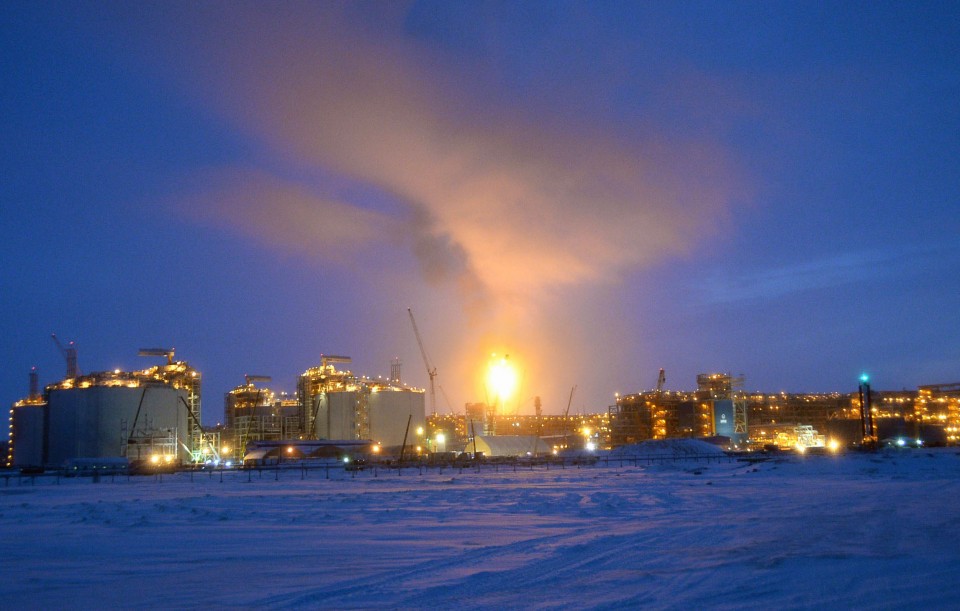[ad_1]
The United States, the European Union and countries such as Japan on Friday agreed to enhance efforts to achieve a goal of reducing global methane emissions by at least 30 percent by 2030, targeting emissions in the oil and gas sector.
Under the Global Methane Pledge Energy Pathway launched the same day, nations are encouraged to eliminate “as soon as possible, and no later than 2030” routine flaring, a process of burning off excess gas during the production of crude oil and natural gas.
“The oil and gas sector contributes roughly one-quarter of all anthropogenic methane emissions due to flaring, venting, and leaking of methane, which is the principal component of natural gas,” the joint statement issued by the United States and the EU said.

Photo taken on Dec. 9, 2017, shows liquefied natural gas facilities operated by Russian natural gas producer Novatek in Sabetta, Russia. (Kyodo) ==Kyodo
Reducing such emissions would have the benefit of acting on climate change and enhancing global gas supply “simply by capturing gas that would otherwise be wasted due to flaring or methane emissions,” they said.
Countries and supporting organizations announced nearly $60 million in dedicated funding to support implementation of the pathway, according to the statement.
The other inaugural members of the pathway are Argentina, Canada, Denmark, Egypt, Germany, Italy, Mexico, Nigeria, Norway and Oman.
According to the U.S. Environmental Protection Agency website, China, the United States, Russia, India, Brazil, Indonesia, Nigeria and Mexico are estimated to be responsible for nearly half of all anthropogenic methane emissions.
The United States, the EU and more than 100 countries launched the Global Methane Pledge at a key climate conference last year, seeking to reduce anthropogenic methane emissions by at least 30 percent by 2030 from 2020 levels.
A total of 120 countries have now endorsed the pledge, representing half of global methane emissions and nearly three-quarters of the global economy, the statement said.
[ad_2]
Source link

















